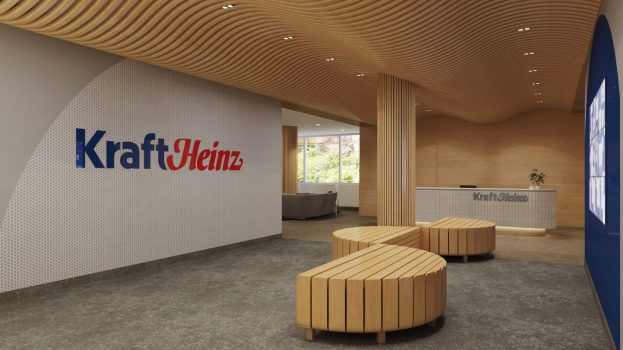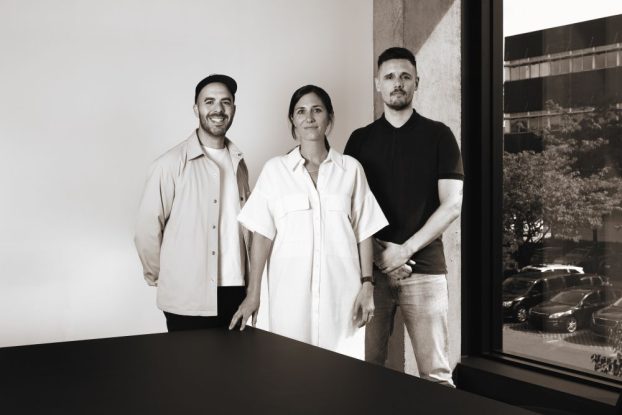Call it what you want – cheap chic, fast fashion, masstige – major retailers are banking on affordable fashion lines to bring consumers into stores to spend more, more often. But there is only so much room to strut on this catwalk of a category
When Sears debuted its relaunched Attitude private label clothing line at LG Fashion week in Toronto last fall, the response from fashion bloggers and editors alike was one of pleasant surprise. The Spring 2010 collection of pleated shorts and faux leather jackets looked impressive on the reedy models with their larger-than-life powderpuff hairstyles and high-high heels. And in case consumers thought they were seeing things, Sears inserted a 12-page fashion digest into the October 2009 issues of eight consumer fashion magazines, in English and French.
Flare.com named Attitude the “Most Surprising Hit” of Fashion Week in a post that also featured Pink Tartan and bridal designer Reva Mivasagar, gushing in typical recessionista fashion: “I’m already putting my order in for their perfect slouchy trousers and chic (that’s right, chic) shorts and sequin tees. Also loved the biker jacket and cute frocks. All for under $100.”
Inherited from Eaton’s in 2001, Attitude languished in Sears’ apparel portfolio until Sarena Campbell joined the company as VP apparel and accessories in November 2008. With experience in women’s retailing at Winners, Campbell quickly saw the potential in Attitude to attract a new demo to the department store.
“When the Attitude brand belonged to Eaton’s, it was more positioned for junior contemporary,” she says. “With us, Attitude is recharged and refocused for a more modern customer. She could be shopping with us for her very first interview suit, or she could be in her mid-40s. She’s very aware of what’s going on in the fashion world, but not necessarily following the trends.”
While Sears declined to provide sales figures by department, reported overall earnings have remained relatively flat over the past five or six years, hovering around $6 billion annually, according to the company website. And the retailer makes no secret of the fact that this Gen X or “younger-minded” female shopper is key to Sears’ overall strategy to boost sales by developing its softer side: “When you look at our business, you can divide it in half,” says Campbell. “When you buy a home, Sears comes to the top of your mind, but when you want cosmetics or apparel, you don’t necessarily think of Sears.
“We can safely say we are very well branded in our hard line, but in order to recharge and create the awareness within that different customer profile, Attitude was the best anchor point.”
When it comes to fashion, this shopper is, like most consumers these days, motivated by value more than ever before. A recent survey of 1,137 women aged 18 to 70 across Canada conducted for strategy by Corus’s W Her Report online panel found that 49% of women place affordability above brand offering (20%), quality (14%), convenience (8%), and advertising (4%) when deciding where to shop. Sales were by far the biggest factor in purchasing decisions at 41%, with influencers like friends (9%) and fashion magazines (2%) trailing far behind.
And she has a lot of choice these days, from established private labels like Walmart’s George line and Loblaw’s Joe Fresh Style to the international “fast fashion” set including Sweden’s H&M, Spain’s Mango and Zara and Los Angeles’s Forever 21, who can recreate a runway design on the cheap and get it on the floor in no more than six weeks. (In the Corus poll, George scored highest in terms of awareness and purchase intent, followed by Joe Fresh. See sidebar, p. 18.) If she picks up an issue of Fashion or Flare, she’ll find another new option, as ads for Zellers’ Pure Alfred Sung line vie with glossy spreads for Yves St. Laurent and Tudor watches.
Target envy
The motivation for joining this crowded party is best understood by looking south of the border, where Target Corporation saw 18% income growth over the past year; according to the retailer’s 2008 annual report, apparel and accessories accounted for 20% of the US$62.9 billion in sales. The chain affectionately nicknamed “Tarjay” has been so successful in carving out a space for itself to flourish alongside Walmart that it has become something of a, well, target for Canadian retailers hoping to fill that niche here at home.
“Everybody’s got Target envy,” says Maureen Atkinson, senior partner at Toronto-based retail consultancy JC Williams Group. “You talk to Canadians who travel, and everybody loves Target…So it does make sense to try and fill that gap [in Canada]. That’s where a lot of companies want to be, and it’s not easy. It isn’t just introducing some product; it takes a lot more than that to make that happen.”
Particularly for department stores, says Atkinson, “that were built for a different time, and that just don’t move that fast. It’s not just about physical logistics, it’s having the right people, having the knowledge.”
For that very reason, Sears stayed quiet until they were confident they had it right, Campbell says. “Marketing is something that we shied away from for a while as a company, because it creates an aspiration [that] brings the customers in. Our job is not to disappoint you, [to provide] the right product at the right value. So we are focusing on expanding and building brand equity, not just for Attitude but for Sears as a brand.”
Available in 100 of the 129 department stores across Canada as well as online at Sears.ca, Attitude is positioned in high-traffic areas in stores. It’s priced equivalent to H&M or Joe Fresh, and new product is delivered monthly, Campbell says. But the “shop-in-shop boutiques” consist mainly of branded signage and a few extra touches like mirrors that result in an experience that is still more “department store” than anything else.
The brand’s multimedia marketing strategy, however, is a departure from the over-posed catalogue genre, using special models and fashion photographers to create clean, classy magazine advertising in English and French (by St. Joseph Group’s Pi Media), and uses higher quality paper in the quarterly DM fashion digests than is used in Sears’s regular flyers. Online activities include a Facebook page with contests, events and regular back-and-forth between the brand and its fans.
A dedicated Web 2.0 Attitude microsite will also launch next month, just in time for the spring line, complete with video streaming and integration with the newly relaunched Sears.ca e-commerce platform for easy ordering – which Campbell sees as a key differentiator from the competition.
“We are not only a full-line retail business, but we also have a catalogue and a very strong online business as well, so we can offer consumers that convenience,” she says.
And by then, with LG Fashion week just around the corner on March 15 to 20, it’ll be time to show the fall collection. The fashion show has become de rigeur for new and emerging brands trying to break through credibly. The brands flaunt their designers and stylists like the models flaunt the couture. Walmart Canada (which declined to participate in this article) put together a show for George when that brand launched in Canada in 2004, and Joe Fresh has had a presence at Fashion Week in Toronto since its launch in 2006. “It’s the most cost-effective venue in Canada to get in front of as much press as possible,” says Sears brand strategy and communications manager Mark Malinowski.
Zellers goes Pure

Sears isn’t the only wallet-friendly retailer stepping into the affordable fashion space. Last April Zellers launched Pure Alfred Sung, an extension of the private housewares and accessories label geared towards the “young moms” who make up most of the store’s female target. “The vast majority of our female target fits into the demo, as most women want to look great at an affordable price,” says brand director Geoff Hardwicke. “That being said, Pure does allow us to move into a younger demo and a segment of the market that might not traditionally shop us for women’s fashion.”
With new product weekly and major shipments once a month, Pure is available to varying degrees in the majority of Zellers’ 280 stores, says Hardwicke. Signage is adapted to the Pure brand identity with additional “impact” signage at rack level to catch mom’s eye.
Similar to Sears, Zellers’ Pure marketing strategy centres on clean, product-oriented magazine advertising created in-house – that doesn’t shy away from listing prices – as well as PR, flyers and a quarterly “magalogue” featuring the key looks of the season. An expansion of the Pure section of Zellers.com is in the works, and at press time Hardwicke said they were “currently looking at LG Fashion Week and possible events within the store.”
Almost a year in, results are positive. “Pure not only helps build the overall Zellers brand, but we also saw some very positive sales increases around the product,” says Hardwicke.
While Zellers wouldn’t reveal specific numbers, the potential for growth is there. Pure Alfred Sung was the brand in the W Her Report panel that most women (35%) had never tried but intended to. Comparatively, only 11% said they had bought it before and would do so again, compared to 15% for Attitude, 33% for Joe Fresh and 51% for George (see p. 18).
Atkinson says that Loblaw’s and Walmart’s diversified offerings play a big role when it comes to awareness, a potential advantage for Zellers as well. “You might say somebody like Zellers is better equipped to [fill the Target gap], because they’ve put food into their marketplaces, which is a much more frequent visit.”
Speaking of grocery, Loblaw Companies has invested in a renovation of over 200 of its stores, reducing the amount of general merchandising space to make room for Joe Fresh Style, the four-year-old clothing brand created by Canadian fashion magnate Joe Mimran (who as part of the Mimran Group also produces Pure Alfred Sung for Zellers).

It’s an encouraging sign for a brand that was initially planned only for the superstore format. “Joe Fresh is doing incredibly well,” says Loblaw VP marketing Craig Hutchison. “Our business is up double digits in an apparel world that is down 5% or flat. We now have more real estate in Canada than Old Navy has, and we’ve got over 200 Joe Fresh boutiques across the country. It’s been wildly successful wherever we put it.”
Having successfully introduced cosmetic and bath lines last year, Loblaw is now experimenting with a new retail format on Queen Street West in Toronto that positions Joe Fresh on the street and a Loblaw’s grocery store upstairs. It’s a statement on a strip dominated by fashion retailers big and small. “For a certain shopper that’s where we see ourselves,” says Loblaw VP marketing, general merchandise, Elizabeth Margles. “We know that we get that young, fashionable shopper making a special trip to our other stores, we know they consider it a fashion brand, so why not make it easy for them?”
The new 8,000-sq.-ft. flagship location – set to open in 2011 – will expand on the distinctly non-supermarket feel of Joe Fresh boutiques with unique fixtures, dedicated change rooms and hip young staff. “To make it a fashion brand and something that feels special to our consumers, we had to make the department special,” says Margles, who works with Mimran and agency Bensimon Byrne to market the brand.
“That’s a benefit both to the store, because we can keep the integrity of the product that much better, and also to consumers, because even though they’re in our store once, twice or three times a week to buy their groceries, it’s still a special trip for them when they go into the department.”
Whether any of these efforts will develop into Canada’s answer to Target remains to be seen.
Canada Goose takes flight

In downtown Toronto this winter it’s hard to walk a block without spotting at least one person sporting a high-end Canada Goose parka, this season’s “it-jacket” recognizable by the fur-lined collar and bright logo badge. The company, under the leadership of Dani Reiss, who in 1997 took a sales position at the company his grandfather founded 53 years ago, has enjoyed a whopping 35% sales growth this year.
But despite the jackets’ newfound popularity among urban hipsters nowhere near an icefield, Reiss refuses to see Canada Goose as a fashion brand. “We happen to be fashionable, and in staying authentic and true to who we are, we think we can continue to remain there,” he says. “We believe that people want to own things that have value, that aren’t just going to change year to year, that are classic and iconic.”
Sold in 40 countries around the world, apparently “made in Canada” carries a certain cachet outside our borders: the line of Canada Goose jackets designed exclusively for the Japanese market are named after such exotic locales as “Alberta,” “Manitoba” and even “Calgary.”
But despite successes in Europe and Asia, Reiss had trouble convincing retailers back home on the coolness of Canadiana at first – and the higher price point (around $600) due to domestic manufacturing costs was another disincentive. So he resorted to guerrilla tactics to get his product seen: handing out jackets to bouncers, scalpers and film crews on location in chilly spots. It was the latter than got his product on-screen, in films like White Out and
series like Battle of the Blades, and finally into 150 retailers in Canada.
But the non-traditional marketing strategy stuck, evidenced most recently in a global partnership with Fairmont Hotels & Resorts, to outfit doormen and other consumer-facing staff (pictured left) at locations around the world including, crucially, five in B.C., just in time for the Olympics. Another partnership with Maple Leafs Sports and Entertainment includes outfitting the Toronto FC, Maple Leafs and Raptors with custom team jackets, a branded complimentary coatcheck service at the Air Canada Centre and high-profile models like Chantal Kreviazuk, who sang the national anthem at a Leafs game in December wearing a special-edition Polar Bears International parka.
VP marketing Kevin Spreekmeester, who prefers PR agency High Road Communications and social media consultants like MGI Media’s Amber MacArthur to traditional ad agencies, says the “unconventional, opportunistic” approach is a way to differentiate the brand from the competition – like The North Face and Columbia – with their large budgets and traditional media buys. “If it’s not a natural fit to our brand, we don’t do it,” says Spreekmeester. “Everything we do has to find its way into the soul of who we are.”
Now Reiss and co. are working on a strategy to expand the brand’s international social media presence, hiring 24/7 spokespeople to respond
to Facebook comments and queries in languages including English, Swedish and German (at press time the Canada Goose Inc. page had 2,100+ members). “We believe our consumers respond better to a grassroots community feel, and advertising takes us into an unspoken realm of a different brand personality.”
What women want
How do retailers’ house fashion brands measure up in the eyes of consumers? Strategy asked Corus to put the question to its W Her Report online panel of 1,137 Canadian women aged 18 to 70. Here’s what they said:























